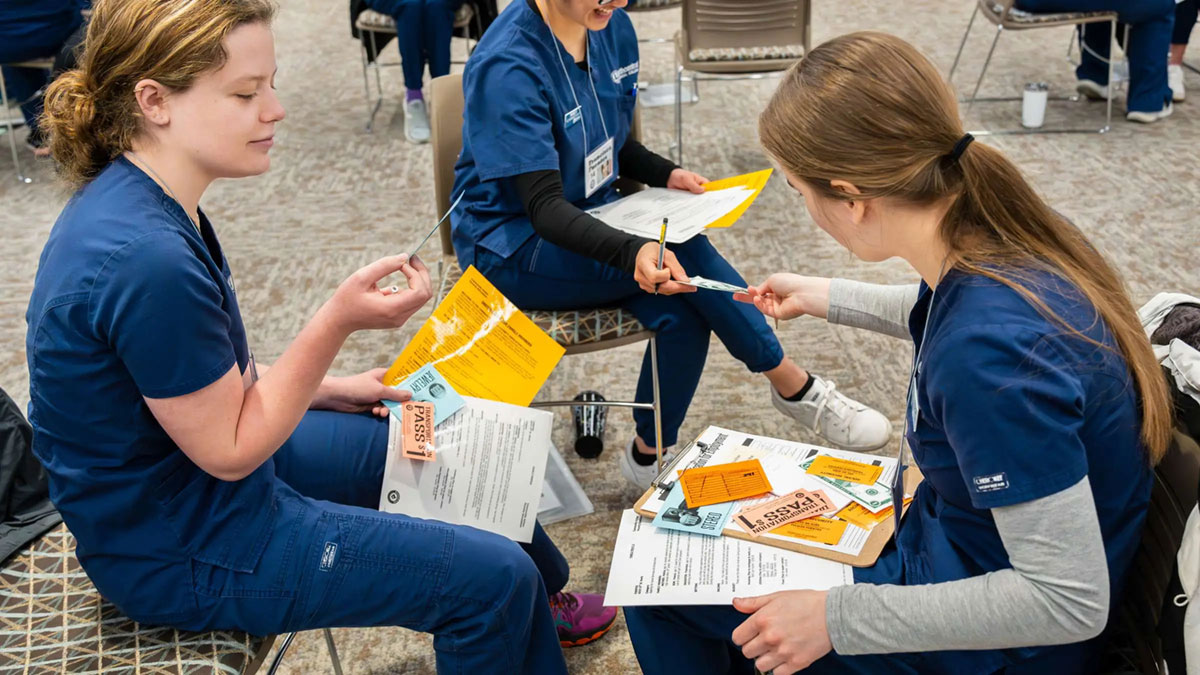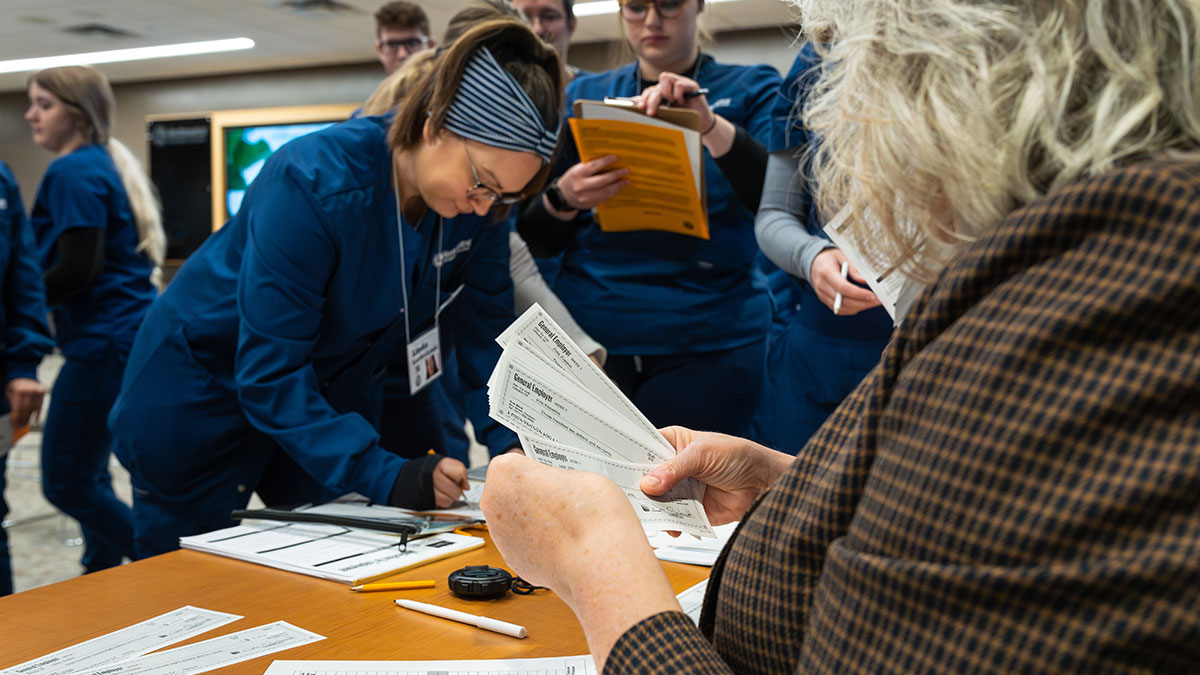NTC Nursing Students Gain Insight into the Complexities of Living in Poverty
Having compassion and empathy for patients is an important part of being a nurse, but it can be challenging for someone to understand circumstances they’ve never been through. To help NTC’s nursing students understand the daily struggles of families living in poverty, they participated in a Community Action Poverty Simulation in early April.

According to the United States Census Bureau, nearly 38 million people are living in poverty, leaving many struggling to make ends meet. They are forced to make difficult decisions and confront obstacles that often go unseen.
The objective of the simulation was to bring the struggles, fears, and frustrations of those living in poverty to light for NTC’s nursing students. Students were divided into families of varying sizes, each with their own backstory. The simulation was divided into 15-minute sessions. Each session represented one week, and participants were expected to maintain their homes and provide for their families.
“We know that the area we serve has a lot of individuals that are living in poverty,” said Stephanie Bessert, Associate Dean of Nursing at NTC. “We hope that by allowing students to participate in the poverty simulation they can gain perspective on what it is like to live in poverty.”
In addition to their homes, other locations in the simulation included a bank, supermarket, school, police station, place of employment, healthcare center, pawn shop, utility services provider, realty office, daycare center, homeless shelter, community action agency, quick cash business, interfaith services office, homeless shelter, and juvenile jail.

Each participant had a dossier that included the name, age, gender and occupation of the family member they were playing. Children were required to attend school, and if young children were found to be home alone, they were sent to juvenile jail. Children under the age of 14 were not allowed to work. Adults were either employed full or part-time or were unemployed.
Transportation was key, as all participants needed either a bus pass or fuel card to go anywhere, including school and jobs.
Students and those with a job were required to be present at those locations for a large chunk of the 15-minute session. Participants quickly realized that there was not much time left for taking care of other responsibilities, such as acquiring transportation passes, grocery shopping, paying bills or receiving healthcare.
With too much to do and too little time to do it in, participants were forced to make tough choices. Some had to pawn items from their home or visit the quick cash business in order to get access to money immediately.
The interfaith services center and the community action agency had resources that could help families, but they often found it difficult to make it there.
In the third week of the simulation, the school was closed for break. All of a sudden, many children had no place to go during the day. There was a daycare center, but that created an added, and oftentimes impossible, additional expense for families.
After they completed the simulation, participants talked about their experiences and what they learned. Those who played adults felt the stresses that a lack of money and a lack of resources can cause, and they began to understand why people living in poverty can have a very challenging time escaping the cycle. Those who played children realized how hard poverty can be on them as well, as they could see the struggles their families were facing but experienced feelings of uselessness since they were unable to help.
Participants realized that one of the least visited locations in the simulation was the healthcare center. It wasn’t that they didn’t want to take care of their health; they didn’t have the time or the means.
Participants also heard from guest speakers Carly Hanney, Director of Community Engagement for United Way of Marathon County, and Tara Draeger, System Director of Community Health and Health Equity for Aspirus Health.
Draeger explained that all of the challenges faced by those living in poverty can have a negative impact on a person’s health. As a result, she said it’s important to treat the whole person and ask questions instead of making assumptions.
She shared a story on an individual who kept ending up in the hospital because he wasn’t taking his medication. Instead of asking him why, they would give him another prescription and send him on his way, only for him to end up at the hospital again. Finally, someone asked him why he wasn’t taking the medication. It wasn’t that he didn’t care or didn’t want to; he did not own a refrigerator, and it was required that the medication be kept cold.
While various community resources exist, most people don’t know what is available. Part of treating the whole person includes referrals to community resources that can help them.
Hanney spoke about the Community Closet at United Way of Marathon County. Nearly 30% of the county’s population lives below the ALICE (asset limited, income constrained, employed) threshold. They have a job but are unable to make ends meet.
A whole family can get clothes in one place through the Community Closet, reducing barriers to access. Clothing provides dignity, and people are able to pick out clothing that matches their style and meets their needs. Families can visit the closet once a month and receive up to 10 items and one pair of shoes per household member.
Haney said some people only visit the closet once, while others come each month. So far this year, there have been 1,285 visits to the Community Closet.
The United Way of Marathon County has also started a mobile closet to reach those throughout the county who aren’t able to make it to the closet in Wausau. People may not always be comfortable accessing services in a community they are not familiar with, so a mobile closet brings the resources to them.
“We hope students learn to empathize with these individuals and really learn to understand their circumstances,” Bessert said. “In a role as a nurse, it’s important to understand an individual’s barriers and how to best connect them to resources that are available to promote healthy outcomes and overall wellbeing.”
